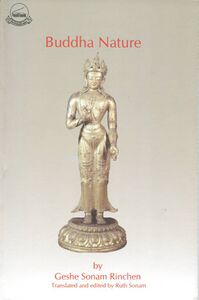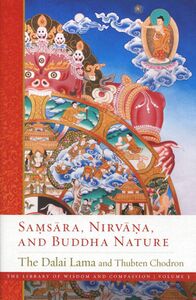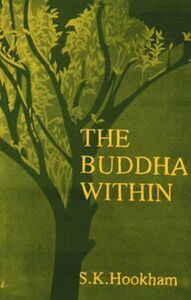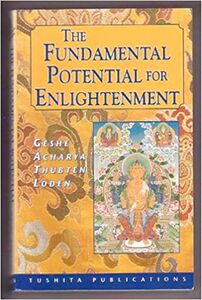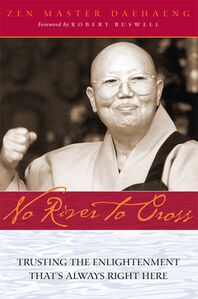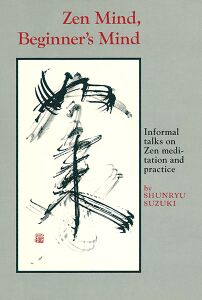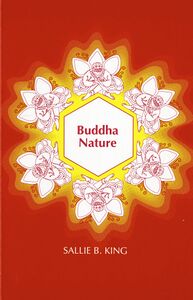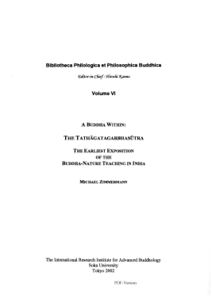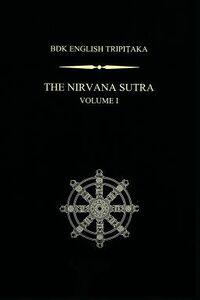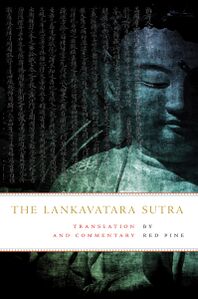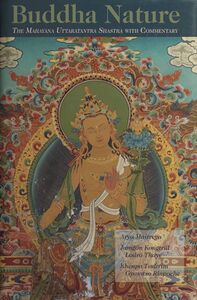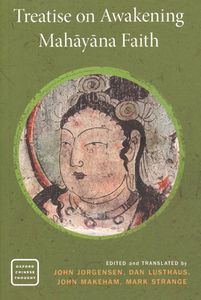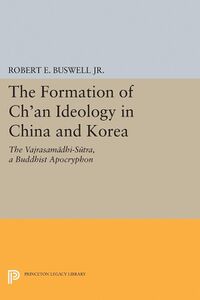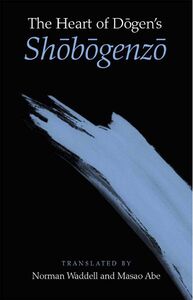Begin Discovering Your Buddha-Nature: Difference between revisions
From Buddha-Nature
No edit summary |
No edit summary |
||
| Line 414: | Line 414: | ||
}} | }} | ||
</div> | </div> | ||
<div class="position-relative bg-sky-clouds"> | |||
<div class="position-absolute h-100 w-100 opac-50 bg-light"></div> | |||
<div class="position-relative section-header pt-5 mb-4 pl-4 pb-2 border-bottom-rightfade">Explore the subjects | |||
<div class="text-80 text-muted position-absolute" style="bottom: 7px; right: 10px;">[[Site Guide|Complete Site Guide]]</div> | |||
</div> | |||
<div class="row m-0 px-lg-5 pt-4"> | |||
{{LocalTile | |||
|classes=col-sm-6 col-lg-4 | |||
|link=Questions | |||
|header=The Questions | |||
|image=https://commons.tsadra.org/images-commons/thumb/c/c0/Buddha_disciples_gold.jpg/800px-Buddha_disciples_gold.jpg | |||
|content=Why is buddha-nature important? What would it mean to not have buddha-nature? Is buddha-nature the soul? These and other common questions about buddha-nature are outlined below, with links to readings, videos, and other material to help you explore further. New to Buddhist ideas? Click on Discover below. | |||
|watermark=Subject | |||
}} | |||
{{LocalTile | |||
|classes=col-sm-6 col-lg-4 | |||
|link=Ideas | |||
|header=The Ideas | |||
|image=https://commons.tsadra.org/images-commons/thumb/6/67/Sthiramati.jpg/648px-Sthiramati.jpg | |||
|content=Is buddha-nature already perfected and simply obscured by delusion, or is it a seed or potential that must be cultivated and perfected? Is buddha-nature a definitive or provisional teaching? Is it the mind's natural luminosity, or is it the same as emptiness? These are questions that cut to the heart of Mahāyāna Buddhist doctrine regarding the nature of enlightenment, reality, and the Path. This page introduces some of the key questions in buddha-nature theory, framed in terms of binaries. | |||
|watermark=Subject | |||
}} | |||
{{LocalTile | |||
|classes=col-sm-6 col-lg-4 | |||
|link=Topics | |||
|header=The Topics | |||
|image=https://commons.tsadra.org/images-commons/thumb/c/c1/Christine-wehrmeier-DnVNH2_GY5g-unsplash.jpg/400px-Christine-wehrmeier-DnVNH2_GY5g-unsplash.jpg | |||
|content=In the latter stages of its historical development in India, the idea of buddha-nature emerged as one of the most salient features of the Mahāyāna Buddhist tradition. As this form of Buddhism spread beyond the cultural milieu of ancient India, the importance of buddha-nature became evermore pronounced. In East Asian and Tibetan Buddhism, buddha-nature came to be a major keystone in the assimilation and adaptation of the Indian scriptural tradition. And, as these forms of Buddhism expanded upon that Indian heritage and developed their own literary expression of the Buddhist teachings, buddha-nature continued to be a major theme that was revisited again and again. Thus buddha-nature was weaved into the very fabric of these Buddhist traditions. Below you will find a list of pertinent topics related to buddha-nature, along with some of the major themes in which it played a crucial role. | |||
|watermark=Subject | |||
}} | |||
{{LocalTile | |||
|classes=col-sm-6 col-lg-4 | |||
|link=People | |||
|header=The People | |||
|image=https://commons.tsadra.org/images-commons/thumb/a/a3/Asanga_and_Maitreya.jpg/419px-Asanga_and_Maitreya.jpg | |||
|content=As one of the key doctrines of Mahāyāna Buddhism, buddha-nature has been taught by many of the greatest masters of India, China, Tibet, Japan, Mongolia, and Korea for well over a thousand years. Here you will find introductions to the many authors who have written on the topic, from the luminaries of Indian Madhyamaka to the great saints of Japan and Tibet. Also in this section, you will find pages for the many contemporary scholars and teachers who have written and spoken on buddha-nature. Simply filter the entire list using the search/filter bar below. | |||
|watermark=Subject | |||
}} | |||
{{LocalTile | |||
|classes=col-sm-6 col-lg-4 | |||
|link=History | |||
|header=The History | |||
|image=https://commons.tsadra.org/images-commons/thumb/a/a3/Ascetic_Sumedha_and_Dipankara_Buddha.jpg/320px-Ascetic_Sumedha_and_Dipankara_Buddha.jpg | |||
|content=The doctrine of buddha-nature became widespread in India in the first centuries of the Common Era. Although the ideas have roots that stretch back to the earliest teachings of the Buddha, the concept of tathāgatagarbha—"womb or seed of buddhahood"—was first taught in Mahāyāna communities. It was related to, but most likely distinct from both Madhyamaka and Yogācāra, the dominant schools of the Mahāyāna, emerging primarily from a corpus of scripture collectively known as Tathāgatagarbha sūtras and a commentary on them known as the Ratnagotravibhāga. As these scriptures circulated in India and were translated into Chinese and Tibetan, buddha-nature theory spread and was ultimately integrated—albeit with significant differences—into all philosophical schools and traditions of Mahāyāna Buddhism, from Japanese Zen to Tibetan Mahāmudrā. | |||
|watermark=Subject | |||
}} | |||
</div> | |||
<div class="row m-0 px-lg-5 pt-0 pb-5"> | |||
{{LocalTile | |||
|classes= mw-customtoggle-literaturetile col-sm-6 col-lg-4 | |||
|header=The Literature | |||
|image=https://commons.tsadra.org/images-commons/d/d0/Sutra.jpg | |||
|content=Texts and multilingual resources. | |||
|left-bottom-label=expand | |||
|extracontent= | |||
<div class="row mw-collapsible mw-collapsed pb-4" id="mw-customcollapsible-literaturetile"> | |||
{{MiniTileCustom | |||
|image=https://commons.tsadra.org/images-commons/thumb/7/7f/Articles.jpeg/320px-Articles.jpeg | |||
|link=Secondary_Sources | |||
|text=The Bibliography | |||
}} | |||
{{MiniTileCustom | |||
|image=https://commons.tsadra.org/images-commons/4/48/Buddha.jpg | |||
|link=Primary_Sources | |||
|text=The Source Texts | |||
}} | |||
{{MiniTileCustom | |||
|image=https://commons.tsadra.org/images-commons/thumb/3/3a/Screen_Shot_2018-06-20_at_3.54.38_PM.png/498px-Screen_Shot_2018-06-20_at_3.54.38_PM.png | |||
|link=Texts/Ratnagotravibhāga_Mahāyānottaratantraśāstra | |||
|text=The Ratnagotravibhāga | |||
}} | |||
{{MiniTileCustom | |||
|image=https://commons.tsadra.org/images-commons/d/d8/Sutra_alt.jpeg | |||
|link=Texts/Ratnagotravibhāga_Mahāyānottaratantraśāstra/Root_Verses | |||
|text=The Multilingual Root Verses | |||
}} | |||
</div> | |||
}} | |||
{{LocalTile | |||
|classes= mw-customtoggle-librarytile col-sm-6 col-lg-4 | |||
|header=The Library | |||
|image=https://commons.tsadra.org/images-commons/thumb/7/79/Library-unsplash.jpg/320px-Library-unsplash.jpg | |||
|content=A curated space for publications on buddha-nature. | |||
|left-bottom-label=expand | |||
|extracontent= | |||
<div class="row mw-collapsible mw-collapsed pb-4" id="mw-customcollapsible-librarytile"> | |||
{{MiniTileCustom | |||
|link=Library | |||
|image=https://commons.tsadra.org/images-commons/thumb/7/79/Library-unsplash.jpg/320px-Library-unsplash.jpg | |||
|text=The Complete Library | |||
}} | |||
{{MiniTileCustom | |||
|link=Library/Books | |||
|image=https://commons.tsadra.org/images-commons/thumb/d/db/Books.jpg/320px-Books.jpg | |||
|text=Books | |||
|wrapperclasses=col-6 pr-1 | |||
}} | |||
{{MiniTileCustom | |||
|link=Library/Dissertations | |||
|image=https://commons.tsadra.org/images-commons/thumb/1/16/Dissertations.jpeg/320px-Dissertations.jpeg | |||
|text=Dissertations | |||
|wrapperclasses=col-6 pl-1 | |||
}} | |||
{{MiniTileCustom | |||
|link=Library/Articles | |||
|image=https://commons.tsadra.org/images-commons/thumb/7/7f/Articles.jpeg/320px-Articles.jpeg | |||
|text=Articles | |||
|wrapperclasses=col-6 pr-1 | |||
}} | |||
{{MiniTileCustom | |||
|link=Library/Interviews | |||
|image=https://commons.tsadra.org/images-commons/thumb/1/15/Mic.jpg/320px-Mic.jpg | |||
|text=Interviews | |||
|wrapperclasses=col-6 pl-1 | |||
}} | |||
{{MiniTileCustom | |||
|link=Library/Sutras | |||
|image=https://commons.tsadra.org/images-commons/d/d8/Sutra_alt.jpeg | |||
|text=Sutras | |||
|wrapperclasses=col-6 pr-1 | |||
}} | |||
{{MiniTileCustom | |||
|link=Library/Commentaries | |||
|image=https://commons.tsadra.org/images-commons/thumb/2/22/Pecha1.jpg/320px-Pecha1.jpg | |||
|text=Commentaries | |||
|wrapperclasses=col-6 pl-1 | |||
}} | |||
{{MiniTileCustom | |||
|link=Library/People | |||
|image=https://commons.tsadra.org/images-commons/thumb/a/a3/Asanga_and_Maitreya.jpg/168px-Asanga_and_Maitreya.jpg | |||
|text=People | |||
|wrapperclasses=col-6 pr-1 | |||
}} | |||
{{MiniTileCustom | |||
|link=Library/Multimedia | |||
|image=https://commons.tsadra.org/images-commons/thumb/b/b9/Media.jpeg/320px-Media.jpeg | |||
|text=Multimedia | |||
|wrapperclasses=col-6 pl-1 | |||
}} | |||
{{MiniTileCustom | |||
|link=Glossary | |||
|image=https://commons.tsadra.org/images-commons/thumb/7/72/Search-reduced.jpg/320px-Search-reduced.jpg | |||
|text=Terms Glossary | |||
}} | |||
{{MiniTileCustom | |||
|link=Secondary_Sources | |||
|image=https://commons.tsadra.org/images-commons/thumb/7/7f/Articles.jpeg/320px-Articles.jpeg | |||
|text=The Bibliography | |||
}} | |||
</div> | |||
}} | |||
Revision as of 14:29, 16 December 2020
Discover
Discover how buddha-nature is articulated in various Buddhist traditions by exploring multimedia, articles, books, and translations of primary sources from leading Buddhist teachers and academics. This page brings together a collection of curated resources designed to make the concept of buddha-nature understandable and accessible to a general audience.
On How Beginning Students Might Engage with Buddha-Nature Teachings by Ringu Tulku
Ringu Tulku talks about how beginning students might start to orient themselves toward buddha-nature teachings in practice. He explains that it is important to recognize that everybody has the seed of wisdom and compassion within them.
Featured Articles
Books
Featured Articles
Books
Study the Sources
The seeds of buddha-nature teachings are sprinkled throughout the sutras and tantras of the Buddhist canon. A core group of scripture that initially taught buddha-nature known as the tathāgatagarbha sūtras date between the second and fourth centuries. These include the Tathāgatagarbhasūtra, the Mahāparinirvāṇasūtra, the Śrīmālādevīsūtra and several others. The famous Laṅkāvatārasūtra was also important for buddha-nature theory. In Tibetan Buddhism the late-Indian treatise Ratnagotravibhāga Mahāyānottaratantraśāstra, or Gyü Lama as it is known in the Tibetan, serves as a major source for buddha-nature. In East Asia the Awakening of Faith in the Mahāyāna (大乗起信論) and the Vajrasamādhisūtra were the most influential treatises in spreading buddha-nature theory. And in Japan, the Zen master Dōgen (1200–1253), whose instructional lectures were collected in his Shōbōgenzo, also wrote extensively on the topic of buddha-nature. All of these important buddha-nature texts have been translated into English by leading scholars and translators. Below is a selection of these works:
Buddha-Nature in Translation
More from the Experts
Alex Gardner served as the writer-in-residence for Tsadra Foundation's Buddha-Nature Project from 2017-2019. Read his introductory articles on the Ratnagotravibhāga and the history of buddha-nature theory.
Jump to Explore to Learn More
Explore the subjects
The Questions
Why is buddha-nature important? What would it mean to not have buddha-nature? Is buddha-nature the soul? These and other common questions about buddha-nature are outlined below, with links to readings, videos, and other material to help you explore further. New to Buddhist ideas? Click on Discover below.
The Ideas
Is buddha-nature already perfected and simply obscured by delusion, or is it a seed or potential that must be cultivated and perfected? Is buddha-nature a definitive or provisional teaching? Is it the mind's natural luminosity, or is it the same as emptiness? These are questions that cut to the heart of Mahāyāna Buddhist doctrine regarding the nature of enlightenment, reality, and the Path. This page introduces some of the key questions in buddha-nature theory, framed in terms of binaries.
The Topics
In the latter stages of its historical development in India, the idea of buddha-nature emerged as one of the most salient features of the Mahāyāna Buddhist tradition. As this form of Buddhism spread beyond the cultural milieu of ancient India, the importance of buddha-nature became evermore pronounced. In East Asian and Tibetan Buddhism, buddha-nature came to be a major keystone in the assimilation and adaptation of the Indian scriptural tradition. And, as these forms of Buddhism expanded upon that Indian heritage and developed their own literary expression of the Buddhist teachings, buddha-nature continued to be a major theme that was revisited again and again. Thus buddha-nature was weaved into the very fabric of these Buddhist traditions. Below you will find a list of pertinent topics related to buddha-nature, along with some of the major themes in which it played a crucial role.
The People
As one of the key doctrines of Mahāyāna Buddhism, buddha-nature has been taught by many of the greatest masters of India, China, Tibet, Japan, Mongolia, and Korea for well over a thousand years. Here you will find introductions to the many authors who have written on the topic, from the luminaries of Indian Madhyamaka to the great saints of Japan and Tibet. Also in this section, you will find pages for the many contemporary scholars and teachers who have written and spoken on buddha-nature. Simply filter the entire list using the search/filter bar below.
The History
The doctrine of buddha-nature became widespread in India in the first centuries of the Common Era. Although the ideas have roots that stretch back to the earliest teachings of the Buddha, the concept of tathāgatagarbha—"womb or seed of buddhahood"—was first taught in Mahāyāna communities. It was related to, but most likely distinct from both Madhyamaka and Yogācāra, the dominant schools of the Mahāyāna, emerging primarily from a corpus of scripture collectively known as Tathāgatagarbha sūtras and a commentary on them known as the Ratnagotravibhāga. As these scriptures circulated in India and were translated into Chinese and Tibetan, buddha-nature theory spread and was ultimately integrated—albeit with significant differences—into all philosophical schools and traditions of Mahāyāna Buddhism, from Japanese Zen to Tibetan Mahāmudrā.
The Literature
Texts and multilingual resources.
expand

